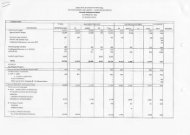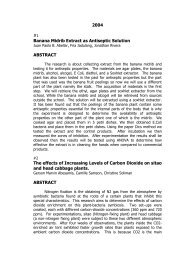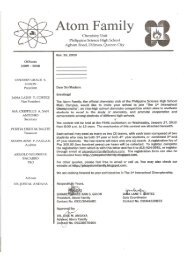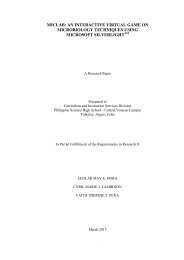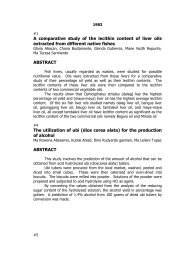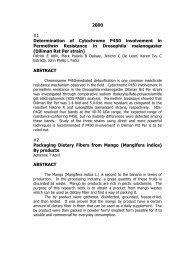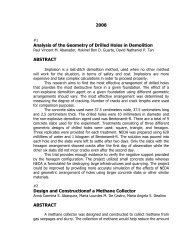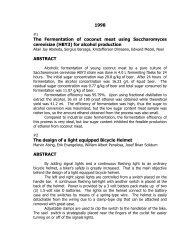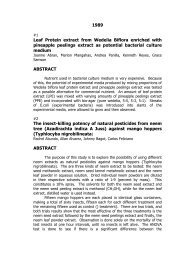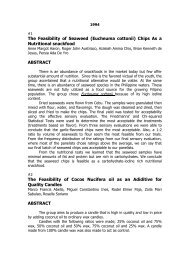(LATO) IN LOWERED SEAWATER pH - Central Visayas Campus ...
(LATO) IN LOWERED SEAWATER pH - Central Visayas Campus ...
(LATO) IN LOWERED SEAWATER pH - Central Visayas Campus ...
Create successful ePaper yourself
Turn your PDF publications into a flip-book with our unique Google optimized e-Paper software.
appear to be imposed by genotypic constraints on the maximum cell density and on<br />
the size of photosynthetic units rather than by either light or nutrient limitation of<br />
chlorophyll and phycobiliprotein synthesis.<br />
Another study by Beer et al. in 1993 focused on the photosynthetic<br />
performance and carboxylation capacity in a range of aquatic macrophytes of<br />
different growth forms. The low chlorophyll content and high chlorophyll specific<br />
photosynthesis of species with high carbon transport capability (i.e. particularly the<br />
marine algae) determine a large section on the water quality and thus, to the life in<br />
marine environment. This suggests that running costs associated with inorganic<br />
carbon assimilation are reduced when a CO2 concentrating system operates.<br />
According to the Australian Online Coastal Information, chlorophyll a<br />
concentrations are an indicator of phytoplankton abundance and biomass in coastal<br />
and estuarine waters. They can be an effective measure of trophic status, are potential<br />
indicators of maximum photosynthetic rate (P -max) and are a commonly used<br />
measure of water quality. High levels often indicate poor water quality and low levels<br />
often suggest good conditions. However, elevated chlorophyll a concentrations are<br />
not necessarily a bad thing in relation to water quality. It is the long-term persistence<br />
of elevated levels that is a problem. For this reason, annual median chlorophyll a<br />
concentrations in a waterway are an important indicator on the status of the<br />
environment.<br />
2.5 Related Studies<br />
Clark et al. (2009) had conducted a research about the response of sea urchin<br />
pluteus larvae (Echinodermata: Echinoidea ) to reduced seawater <strong>pH</strong>. The results<br />
showed that lowered seawater <strong>pH</strong> had affected the survival of the species used.<br />
10



